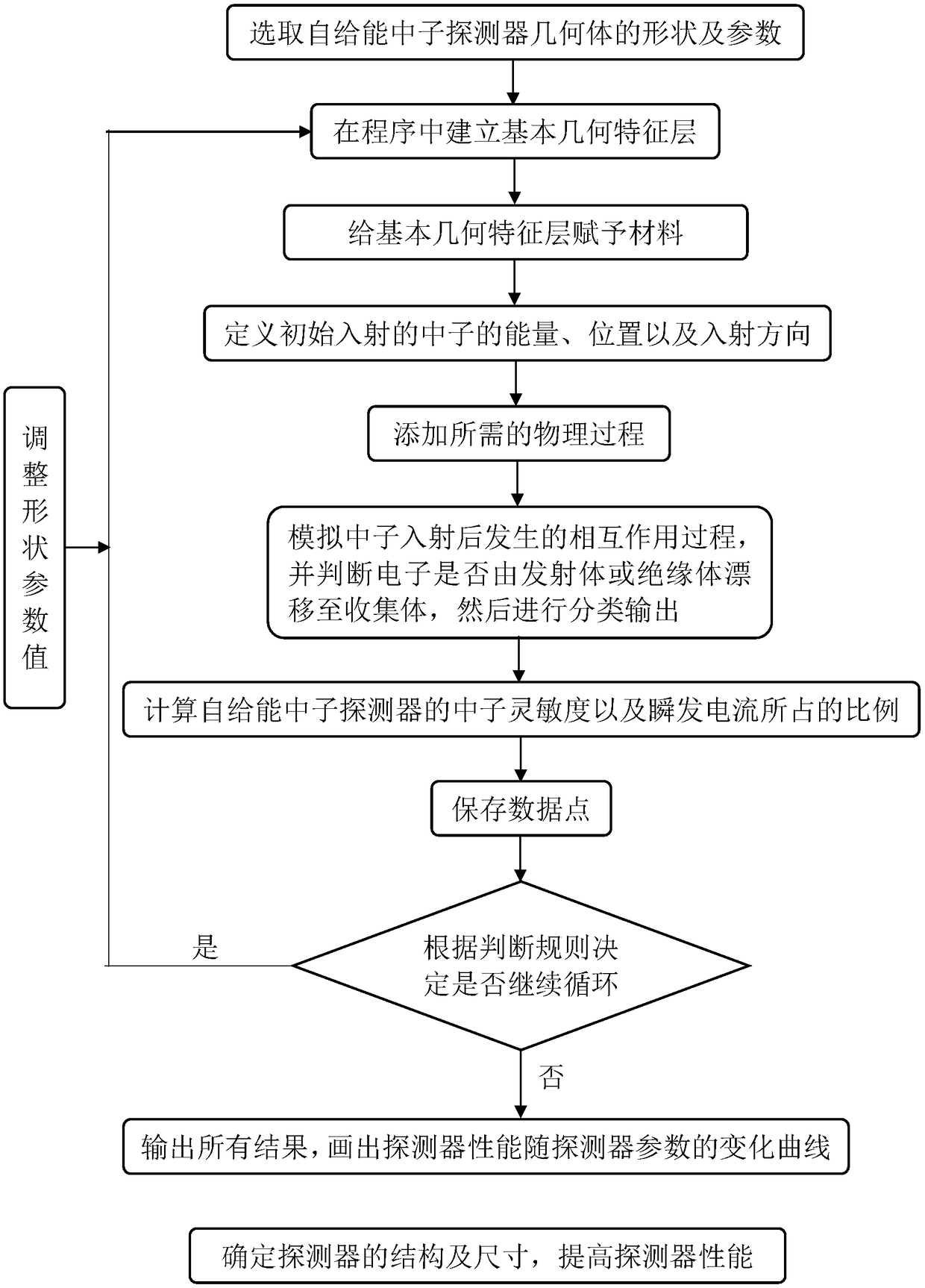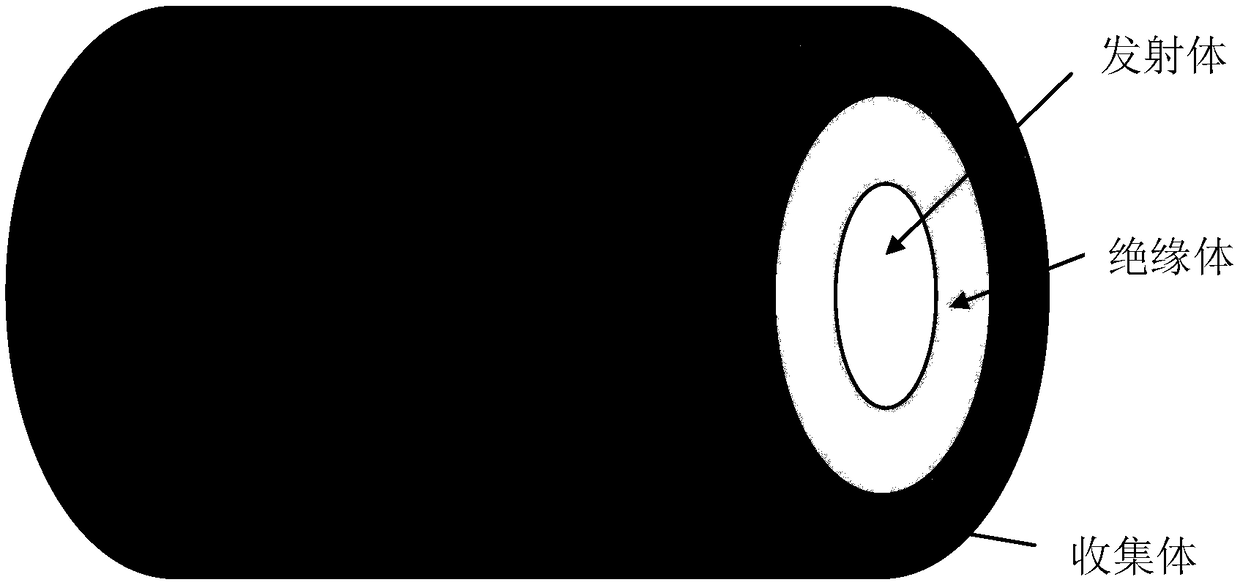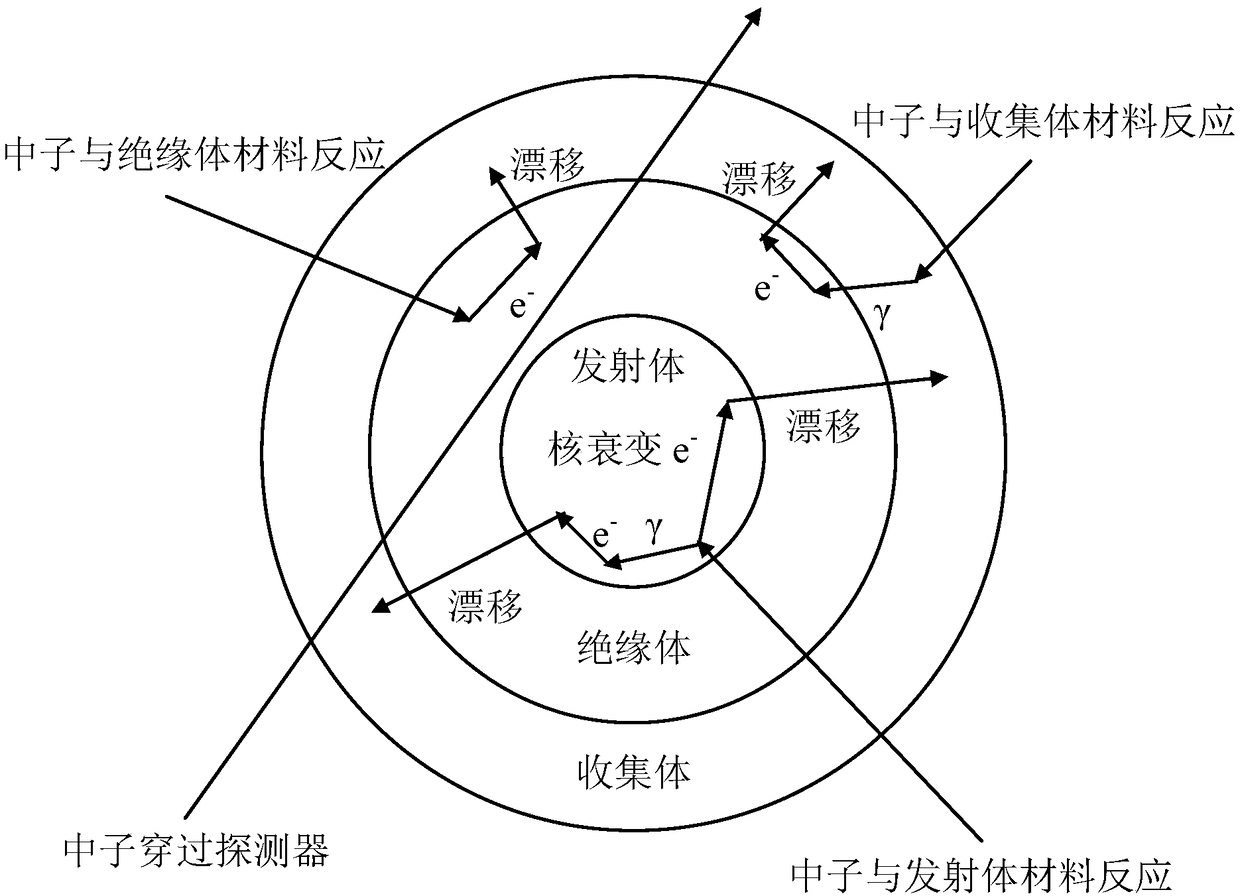An Optimal Design Method for the Structure of a Self-Energy Neutron Detector
A neutron detector, optimized design technology, applied in neutron radiation measurement, instrument, nuclear power generation, etc., can solve problems affecting the performance of self-sufficient neutron detectors
- Summary
- Abstract
- Description
- Claims
- Application Information
AI Technical Summary
Problems solved by technology
Method used
Image
Examples
Embodiment Construction
[0048] Below in conjunction with accompanying drawing and specific embodiment the present invention is described in further detail:
[0049] Rhodium ( 103 Rh) The dependence of the performance of a self-powered neutron detector in a reactor on the radius of the emitter was taken as an example.
[0050] Such as figure 1 as shown,
[0051] Step 1: Select the shape and parameters of the self-powered neutron detector geometry: from the inside to the outside are emitter, insulator and collector respectively, coaxial structure, such as figure 2 shown. The initial values of the geometric parameters are: the emitter radius is 0.1 mm, the insulator thickness is 0.305 mm, the collector thickness is 0.25 mm, and the length is 40 cm.
[0052] Step 2: Input the geometric parameters in the Monte Carlo software to establish the basic geometric feature layer of the self-sufficient neutron detector. The basic geometric feature layer is divided into three parts (coaxial), which are emitt...
PUM
 Login to View More
Login to View More Abstract
Description
Claims
Application Information
 Login to View More
Login to View More - R&D
- Intellectual Property
- Life Sciences
- Materials
- Tech Scout
- Unparalleled Data Quality
- Higher Quality Content
- 60% Fewer Hallucinations
Browse by: Latest US Patents, China's latest patents, Technical Efficacy Thesaurus, Application Domain, Technology Topic, Popular Technical Reports.
© 2025 PatSnap. All rights reserved.Legal|Privacy policy|Modern Slavery Act Transparency Statement|Sitemap|About US| Contact US: help@patsnap.com



